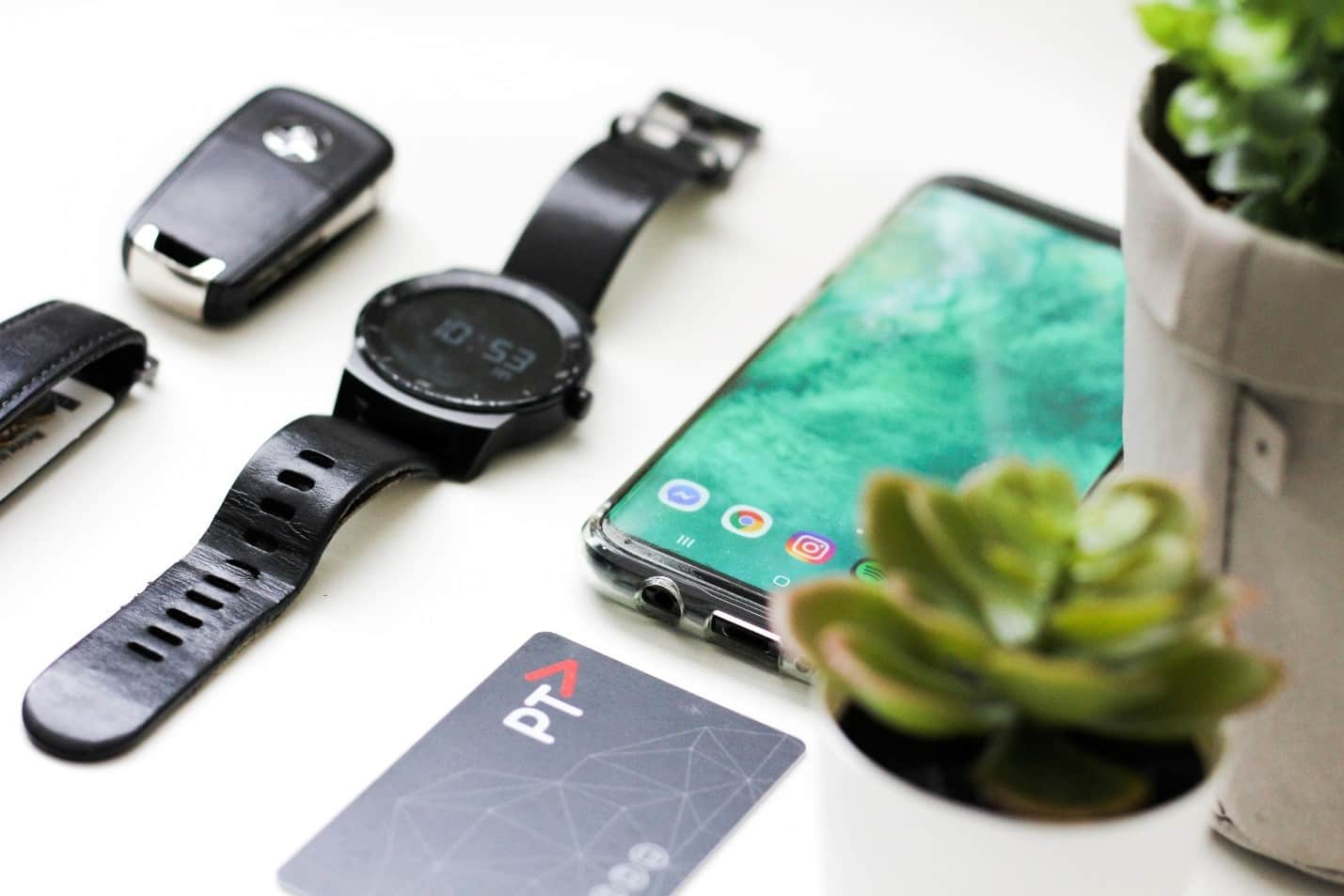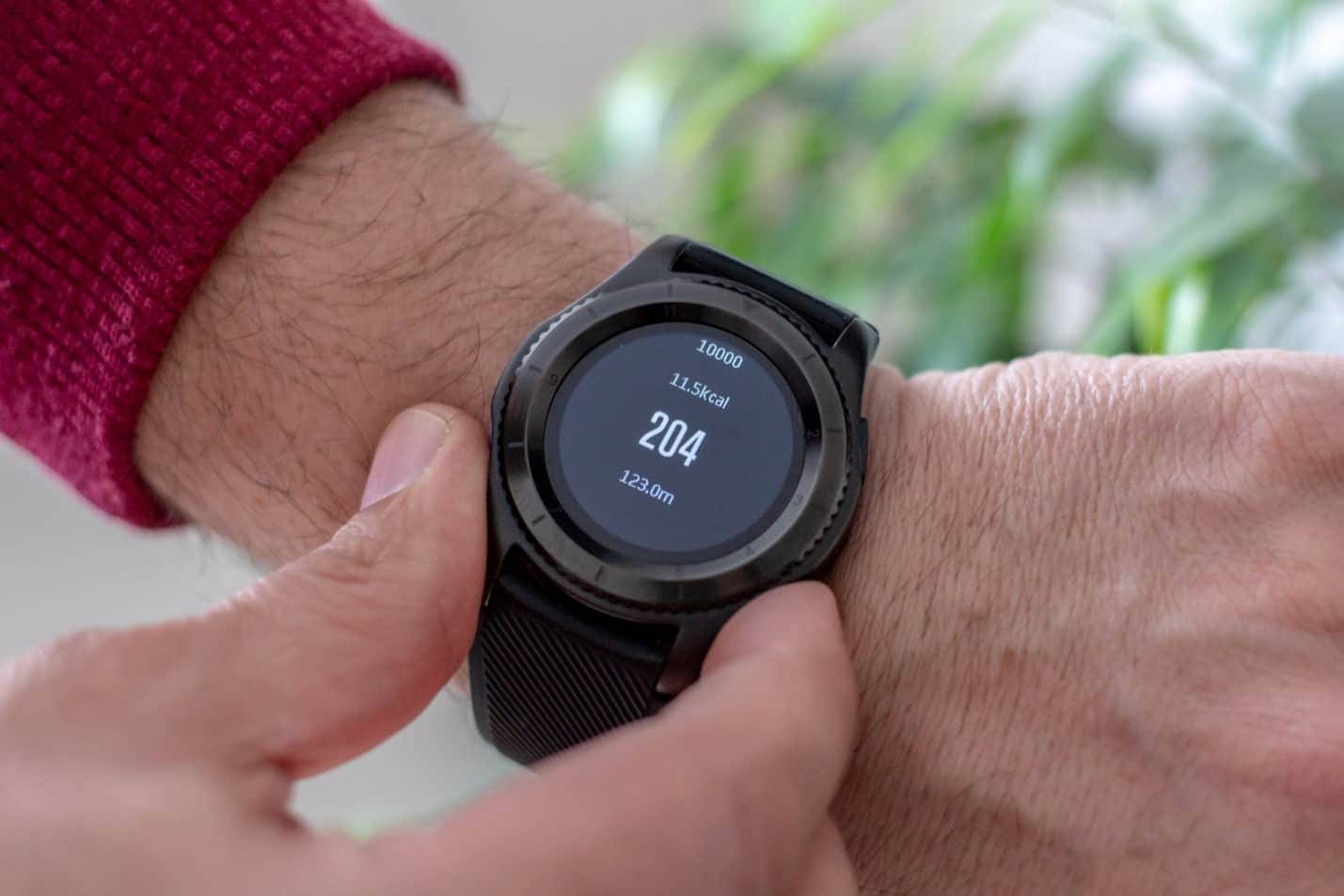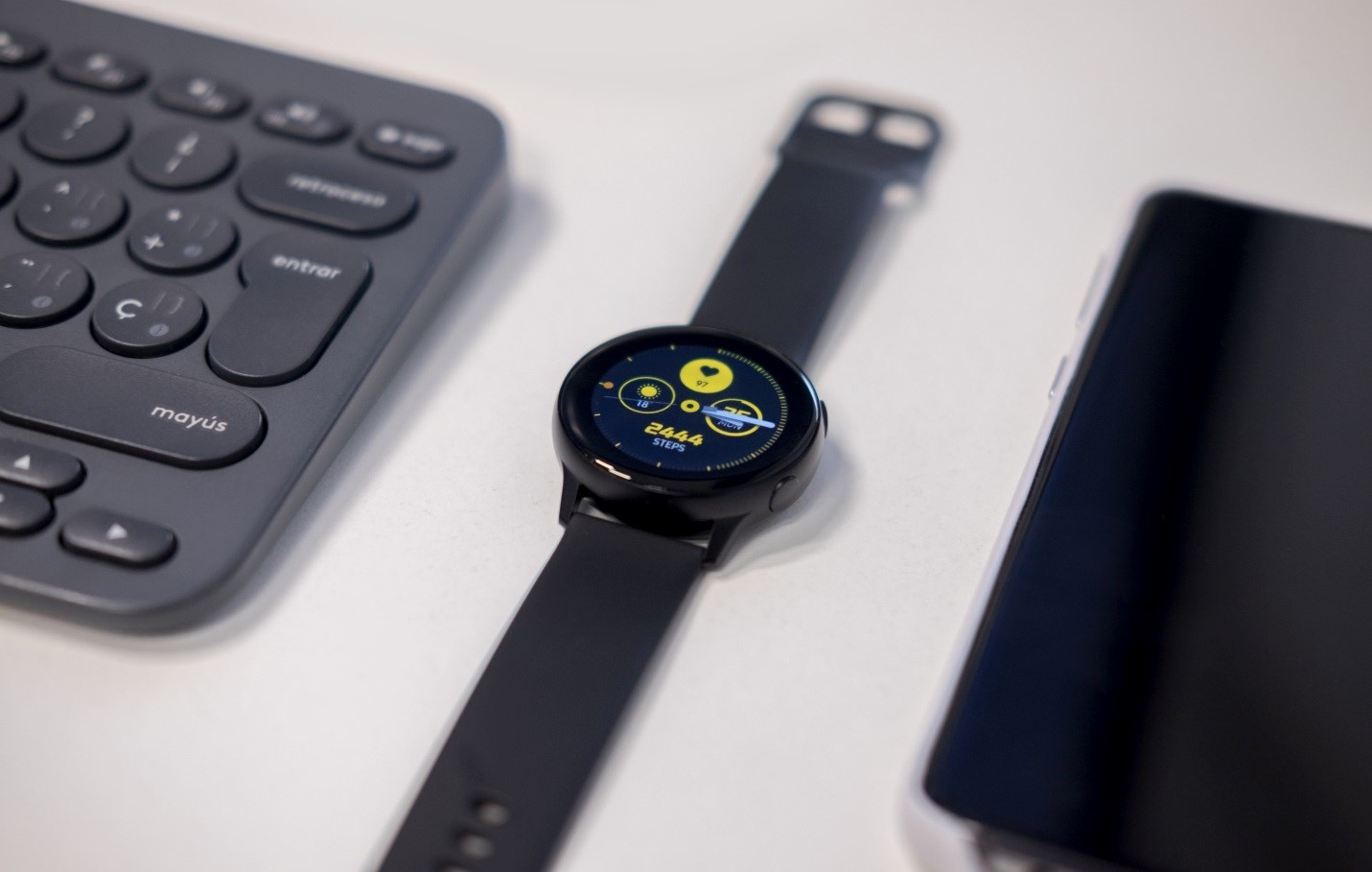
Você Deve se Preocupar com a Segurança do Smartwatch?
A privacidade e segurança dos smartwatches compartilham riscos semelhantes com muitos outros dispositivos inteligentes e IoT. Embora marcas populares tenham algumas proteções implementadas, existem vulnerabilidades conhecidas que podem afetar seu smartwatch. Com smartwatches sendo fabricados para todas as idades, é natural se perguntar sobre os perigos para sua privacidade e dados. Afinal, as ameaças aos smartwatches não vêm de todas as direções, mas isso não significa que seus dados no smartwatch estejam totalmente seguros.
A conveniência desses produtos às vezes pode facilitar o acesso de hackers aos seus dados. No entanto, apesar dessas preocupações, existem maneiras de se proteger.
Riscos de Segurança dos Smartwatches
Os smartwatches são apenas um dos muitos produtos tecnológicos inteligentes que contribuem para a Internet das Coisas (IoT). À medida que esse mercado continua crescendo, esses dispositivos se tornarão cada vez mais vulneráveis a ataques cibernéticos.
Graças à IoT, muitas atividades se tornaram mais fáceis devido à capacidade dos dispositivos de "conversar" entre si. No entanto, essa troca de dados é valiosa e inevitavelmente será alvo de hackers.
Falta de Verificação para Segurança do Consumidor de IoT
A maioria das preocupações em torno da privacidade dos smartwatches está baseada nos perigos da tecnologia conectada e na falta de padrões de cibersegurança em torno da IoT. À medida que mais dispositivos analógicos se conectam à internet (e entre si) - até mesmo interruptores de luz em sua casa inteligente - será necessária cibersegurança.
Os relógios estão entre muitos tipos de produtos tecnológicos inteligentes que entram em uma "área cinzenta" de segurança, onde ninguém está avaliando os produtos IoT quanto à qualidade de sua proteção e segurança do usuário.
Sem uma autoridade central rotulando os dispositivos IoT com classificações claras de segurança, a maioria dos consumidores não tem ideia de quão seguros são seus relógios. Portanto, não há garantia de que seu relógio possa se proteger contra métodos atuais de ciberataques.
Seus Dados do Smartwatch Estão Expostos?
Os dados do smartwatch podem revelar muito sobre você e suas atividades para um fraudador. Todas as informações coletadas, enviadas e recebidas por esses dispositivos se tornam perfeitas para sequestrar sua identidade e vida.
Isso, no entanto, não significa que você deva abandonar seu smartwatch. Em vez disso, você deve se tornar mais consciente de como o fabricante do relógio está lidando com seus dados.
Coleta de dados
Os smartwatches coletam toneladas de informações personalizadas sobre você - passando-as por conexões como Bluetooth e internet. Sua localização GPS, rastreamento de movimento, transações com cartão de crédito e calendário isoladamente podem ser relativamente seguros.
No entanto, quando combinados esses detalhes podem revelar seus PINs de caixa eletrônico, senhas, rotina diária e muito mais. Em teoria, se seu fabricante usar serviços centralizados internos para armazenar e processar seus dados - uma única violação da empresa poderia expô-lo ao roubo de dados.
Armazenamento de dados
Os dados do usuário compilados nesses dispositivos são enviados do seu provedor de serviços para terceiros. Isso não é necessariamente malicioso, pois ajuda os provedores no armazenamento, processamento e análise de dados para fornecer uma melhor experiência. O problema: esses dados também podem ser usados por alguns terceiros para criar perfis de publicidade sobre você.
Esses dados podem até acabar em muitas empresas diferentes, gerando mais pontos de ataque para violar sua privacidade. Vale lembrar que nem todas as marcas de smartwatch lidam com seus dados da mesma maneira, então você precisará ler sobre as políticas de coleta de dados dos fabricantes.
Os smartwatches podem ser hackeados?
Não se engane: existem fraquezas na segurança dos smartwatches. Algumas tentativas de ataque já foram registradas para esses dispositivos. Mas, embora ainda não tenha havido muitas violações importantes com smartwatches, hackers de chapéu branco (também conhecidos como hackers "do bem", que ajudam as empresas a identificar fraquezas em seus produtos/programas/software) ajudaram a revelar algumas lacunas de segurança.
Phishing
O phishing pode ocorrer se você baixar um aplicativo fraudulento e inserir qualquer informação pessoal nele. Esses aplicativos são mais comuns em lojas de aplicativos não oficiais, mas não estão ausentes das lojas do Google e da Apple. Esses aplicativos falsos funcionam pedindo que você faça login em sua conta do Google e, em seguida, um formulário falso captura suas credenciais - fazendo com que você comprometa sua conta involuntariamente.
Bluetooth de Baixa Energia
O Bluetooth de Baixa Energia emparelha seu smartwatch com seu telefone, fones de ouvido e outros dispositivos. Mas existem vulnerabilidades na criptografia de dados do Bluetooth devido aos seus protocolos complicados. Com a criptografia fraca dos dados, um criminoso pode forçar sua entrada em sua conexão com o mínimo de esforço (infelizmente, o Bluetooth é um recurso de conexão importante em dispositivos sem fio como os smartwatches).
Acelerômetro
Os dados do acelerômetro ajudam seu smartwatch a rastrear movimentos para recursos de saúde e fitness, como contagem de passos .Esses dados do acelerômetro também podem ser analisados para revelar senhas e números de cartão de crédito.
Tendências de dados de movimento repetitivo podem ser usadas para descobrir os movimentos de digitação no teclado do computador que reproduzem suas credenciais. Admitidamente, isso requer muito trabalho, tornando esse método de hacking improvável de ser usado, mas possível (se a recompensa for boa o suficiente, os cibercriminosos podem escolher alvos de maior valor para essa abordagem).
Senhas Padrão de Fábrica
As senhas padrão de fábrica são uma ferramenta técnica de backend usada para acessar dispositivos IoT. Como essas permanecem inalteradas depois que você leva esses dispositivos para casa, um hacker pode facilmente encontrar sua senha online ou comprar essas senhas padrão na dark web.
Para evitar esse acesso fácil, os consumidores primeiro precisam estar cientes de que isso existe. Geralmente, os fabricantes escondem as instruções de alteração de senha em manuais técnicos que o usuário nunca lê.
Às vezes, você terá que entrar em contato diretamente com a empresa para atualizar sua senha adequadamente. Mas alguns proprietários que compraram smartwatches mais baratos nem conseguem encontrar uma maneira de entrar em contato com o fabricante original.
Produtos online baratos são comumente comprados em grande quantidade e revendidos por toneladas de distribuidores secundários. Muitos relógios infantis são vendidos dessa maneira, deixando-os com uma grande ameaça à segurança, por isso é melhor que você compre smartwatches apenas de marcas confiáveis e bem conhecidas, como Apple, Fitbit ou Garmin, etc.
Reconfiguração via Mensagem de Texto
Descobriu-se que alguns smartwatches para crianças podem ser hackeados simplesmente enviando-lhes um texto. Usando mensagens de texto especificamente escritas, alguns relógios podem ser reprogramados para beneficiar o hacker. Esse método pode reparar o relógio no telefone do criminoso, dando-lhes mais controle e acesso ao dispositivo. Eles podem então rastrear o relógio por GPS e até mesmo ligar para o usuário.
Apesar de ter sido descoberto em modelos infantis de baixo custo, muitos outros smartwatches mais baratos podem ter vulnerabilidades semelhantes. Isso ocorre porque os fabricantes mais baratos geralmente não se preocupam muito com a segurança em detrimento da facilidade de uso ao montar um produto de entrada. Enquanto marcas de alto nível respeitáveis como a Apple são mantidas com mais responsabilidade, mas ainda frequentemente se deparam com esse debate entre conveniência e segurança.
Essas preocupações com a segurança levaram os fabricantes a atualizar com mais ênfase na criptografia e proteção contra malware da loja de aplicativos. No entanto, a falta de padrões da indústria torna impossível garantir que qualquer produto será adequadamente protegido.

Como Proteger os Dados do Seu Smartwatch
Com a falta de proteções ao consumidor, você ainda terá que ser cauteloso ao usar smartwatches. Você pode começar a limitar seus riscos simplesmente usando os recursos de privacidade existentes do smartwatch. O resto da sua autoproteção volta a estar ciente do que você conecta ao seu relógio.
Configurações de Segurança no Dispositivo
Bloqueie o emparelhamento não autorizado através da versão do seu relógio da configuração Bloqueio de Ativação. Esse recurso impede que relógios roubados sejam acessados. Apple Watch e Samsung Gear usam esse recurso, mas seu relógio pode variar.
Autenticação de dois fatores usa uma confirmação de acompanhamento em um segundo dispositivo para manter usuários indesejados fora. Sabe-se que alguns dispositivos não têm essa configuração, então certifique-se de que o seu tenha antes de comprar.
Proteção por senha na tela de bloqueio é mais um obstáculo para ladrões e hackers.
Os smartwatches podem oferecer vários tipos de proteção, então certifique-se de ativar o máximo possível. Estes podem incluir:
- PIN ou padrão para desbloquear o uso.
- Bloqueio se estiver muito longe do telefone.
- Detecção de "Bloqueio ao Remover".
Protegendo seu smartphone emparelhado
Proteger seu smartphone é tão importante quanto proteger o próprio relógio. Esses dois dispositivos trabalham juntos frequentemente, e essa troca de dados pode deixá-lo vulnerável a invasões.
- Nunca use lojas de aplicativos não oficiais como aquelas acessadas em dispositivos desbloqueados ou na web. As lojas de aplicativos nativas protegem você de baixar aplicativos maliciosos. No entanto, sempre confie em seu instinto com qualquer aplicativo e investigue antes de instalá-lo. Nem mesmo a App Store da Apple e o Google Play conseguem pegar todos os aplicativos maliciosos.
- Não desbloqueie seu telefone porque isso o deixa aberto a riscos de segurança. Sair do jardim murado do seu telefone significa escolher pular as atualizações do sistema operacional. Como você não pode manter seu telefone desbloqueado e manter o sistema operacional atualizado, você perderá as últimas correções de segurança. Além disso, os ecossistemas de aplicativos de dispositivos desbloqueados podem estar cheios de aplicativos perigosos que nunca são verificados ou removidos.
- Mantenha seu dispositivo atualizado com todas as versões mais recentes do sistema operacional e aplicativos. Como mencionado acima, as atualizações vêm com correções críticas de segurança. Atrasar as atualizações pode levar a ataques que são facilmente evitados - então atualize o mais rápido possível. Além disso, certifique-se de remover quaisquer aplicativos que não tenham sido atualizados há anos. O código de programa antigo usado para fazer aplicativos é um alvo frequente de cibercrime.
- Use uma conexão de rede privada virtual (VPN) para criptografar a conexão de internet do seu smartphone. Com seus dados sendo ilegíveis para observadores, você pode se conectar com segurança ao Wi-Fi público. Outro benefício é que alguns provedores de serviços, como o Kaspersky VPN Secure Connection, também oferecem pacotes com proteção antivírus e antimalware.
Controle de Smart Homes
Não conecte todos os seus dispositivos 'Internet das Coisas' (IoT) ao seu relógio. Os hackers podem ter como alvo smartwatches e usá-los como um chaveiro para acessar seus dispositivos inteligentes em casa. Como alguém poderia roubar suas "chaves" pela internet, você pode querer deixar algumas chaves fora do chaveiro (por assim dizer). Por exemplo, sua segurança doméstica inteligente (fechaduras de portas, câmeras de segurança, etc.) poderia torná-lo um alvo fácil para invasão domiciliar.
Configure um Wi-Fi para convidados e tente manter seu relógio fora da rede doméstica principal. Isole seu smartwatch e quaisquer dispositivos de convidados dos dispositivos domésticos seguros na rede principal. Dispositivos móveis que se conectam a Wi-Fi público ou outros dispositivos não domésticos têm mais probabilidade de serem comprometidos.
Remova dispositivos não utilizados ou desatualizados de sua rede doméstica. Qualquer tecnologia não utilizada pode estar perdendo atualizações importantes de software, o que é péssimo para sua segurança. Você pode considerar atualizar seus produtos inteligentes, mas modelos mais antigos têm mais probabilidade de não serem suportados.
Atualize todos os dispositivos usados em sua rede. Não podemos dizer o suficiente: patches de segurança são cruciais. Mantenha todos os seus dispositivos - até mesmo suas smart TVs - carregados com o firmware mais recente. Se eles não puderem ser atualizados, você pode querer substituir o dispositivo por um modelo mais novo ou retirá-lo de sua rede.
Altere as senhas padrão de backend em dispositivos conectados. O acesso técnico de desenvolvimento ao seu dispositivo pode existir através de um conjunto de credenciais padrão de fábrica. Você pode ter instruções no manual técnico do seu dispositivo. Caso contrário, entre em contato com o fabricante e pergunte como alterá-la.
Seu roteador e modem de rede estão entre as senhas mais importantes para alterar. Certifique-se de que suas senhas sejam extremamente fortes e armazene-as com segurança em um gerenciador de senhas, como o Kaspersky Password Manager.

Dicas para proteger a privacidade de seus smartwatches
Compre marcas confiáveis no mercado de smartwatches. Produtos de marcas renomadas são menos propensos a negligenciar a segurança. A reputação da marca implica responsabilidade — algo que marcas desconhecidas e baratas geralmente não têm.
Fique atento a sinais de que o dispositivo pode estar comprometido. Atividades estranhas podem indicar a presença de códigos maliciosos no seu smartwatch ou em outro dispositivo conectado. A coleta, rastreamento e envio de dados costumam causar alto consumo de bateria e dados móveis — fique de olho nisso.
Limite as permissões dos aplicativos. Serviços de localização, por exemplo, podem ser explorados por hackers, mas você pode bloquear esse tipo de acesso. Nos sistemas Android e Apple, os apps geralmente precisam solicitar sua permissão. Nem todo app precisa de acesso à sua localização ou outros dados sensíveis — avalie caso a caso. Menos permissões significa mais segurança. Você pode ativar essas permissões depois, se necessário — mas não pode reverter um vazamento de dados já ocorrido.
De modo geral, é recomendável evitar vincular muitas atividades pessoais aos smartwatches até que existam padrões de segurança bem definidos para dispositivos desse tipo. Embora isso não seja necessário para a maioria dos usuários, pode ser a melhor solução para garantir segurança e privacidade no uso do smartwatch.
Caso você seja comprometido, é importante já contar com uma solução robusta de segurança digital, como o Kaspersky Premium. Embora atualmente não ofereça proteção específica para smartwatches, ele garante a segurança dos seus PCs, tablets e smartphones.
Artigos relacionados:

